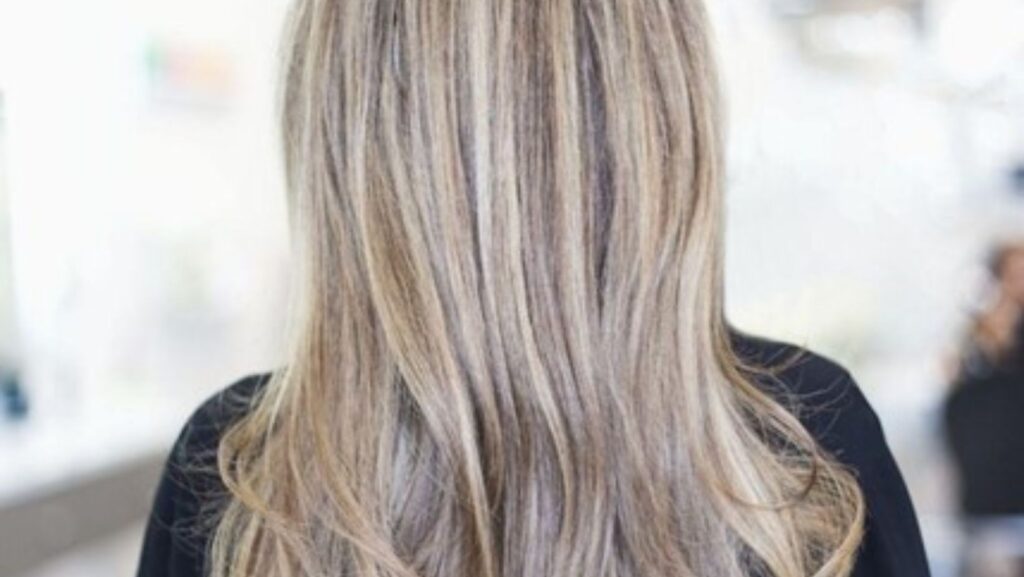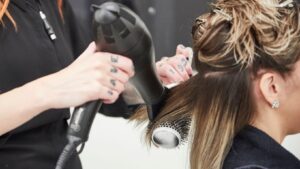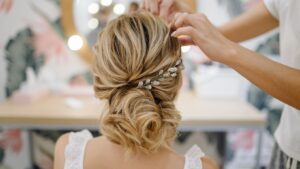We’ve all had that feeling of trepidation when we’re visiting a new salon or stylist for the first time. After all, while new hair styles are never permanent, they do require a degree of financial investment, trust in your stylist, and the willingness to take a risk in some cases.
So how can you be confident your stylist will understand the exciting new look you’re envisioning? Preparing yourself with reference images and certain terminology will keep both you and your stylist on the same page in relation to expectations and achieving specific hair goals. As with most things, clear communication removes unnecessary guesswork and misunderstandings when visiting your hair stylist; the more details the better!
What exactly do stylists appreciate hearing from their guests to ensure they will fulfill their clients’ wishes?
We’ll start with basic knowledge of cut and colour techniques.
Understanding Certain Terminology
Despite the fact that most clients today are very well educated, it never hurts to have a quick rundown of the terms commonly used in the hair industry.
To help eliminate the potential for confusion, here are some popular colour terms to be aware of:
Single-procedure hair colouring – A colour applied all over the hair. This process covers the hair in one shade.
Highlights/Lowlights – This technique involves lightening or darkening single strands of hair to create a visual effect of dimension, and can be completed with either partial or full foils.
Balayage – In lieu of traditional foiling or cap highlighting methods, balayage is an artistic freehand application of colour. The hair looks natural and has a graduated effect with this painted-on technique.
Ombre – As the name suggests, ombre means shadow in French, which makes sense given that it creates a gradient effect. In Ombre hair, dark roots gradually transform into light ends.
In addition, below are some key cutting terms to be aware of:
Blunt – This is also known as a “solid” or “heavy” cut. The blunt cut is a haircut without layers, cut straight across, with the weight falling at the bottom. Thin, fine, or fragile hair will benefit from this cut.
Layering – It simply means that the ends of each individual strand are cut in such a way that they are positioned at different points relative to one another. In addition to giving the illusion of a longer, fuller head of hair, layering is a style that is typically easier to maintain.
Feathering – A texturizing technique shapes the ends of your hair. Wispy ends reduce bulk and make your hair look lighter and thinner.
Bob – This style ends just below the ears, at the chin. Lob haircuts are longer versions of this style that reach down to the collarbone.
Pixie – This haircut is short and close to the scalp. Pixies are too short to be classified as bobs.
A Brief Overview of Your Hair History
Make sure you inform your stylist about any bleaching, colouring, or chemical treatments you have undergone previously. Hair stylists can work with just about any previous hair history as long as they are aware of it before beginning the colouring process.
For instance, if you’ve previously turned to box dye colour, it’s highly recommended that you inform your stylist ahead of time. Not having this information could lead to your stylist misjudging your colour formula affecting the application process. Whether you’ve had your hair chemically straightened or it currently has colour in it, always notify your stylist to protect your hair and avoid potential disappointment.
A Willingness to Listen and Receive Professional Advice
A hairstylist’s goal is to make you feel confident and look your best. In addition to wanting you to leave with the style you wanted, your stylist should also be conscious of your hair’s health.
For example, If you’re making a significant change in colour, that dramatic, wild colour change may not take place in just one or two visits without compromising your hair’s health. As a result, your stylist is more likely to suggest a slow, but ultimately gentler approach to colour and may use selective products or regenerative treatment throughout the colouring journey.
Additionally, your stylist may have suggestions regarding a cut or colour that would be appropriate for your face shape and the amount of time you’re willing to take to style your hair. We encourage our clients to try and stay open-minded as we have your best interest in mind!
Questions Regarding Styling and Maintenance Products
Along with skill, creativity and attention to details, products also play a major role in recreating that professional “just left the salon” look. If you’ve had problems trying to recreate that beautiful look your stylist created in the past, you may wish to inquire what products are being applied to your hair at your next appointment, and what each of them is used for.
Most hair stylists use at least 3 to 5 products per service, so why not take the time to learn more about these magical products before you leave the salon? Furthermore, never hesitate to ask questions about styling techniques like round brushing or curling advice. It is our pleasure to educate our clients on how to replicate the same look at home.
At Atelier Hair, our goal is to elevate your salon experience by providing you not only with a beautiful space, but also with a team of highly trained and passionate hair artists who look forward to enhancing your hair style and ensuring you are completely satisfied.
Contact our team of hair artists to learn more about our professional hair services or to book a consultation.




